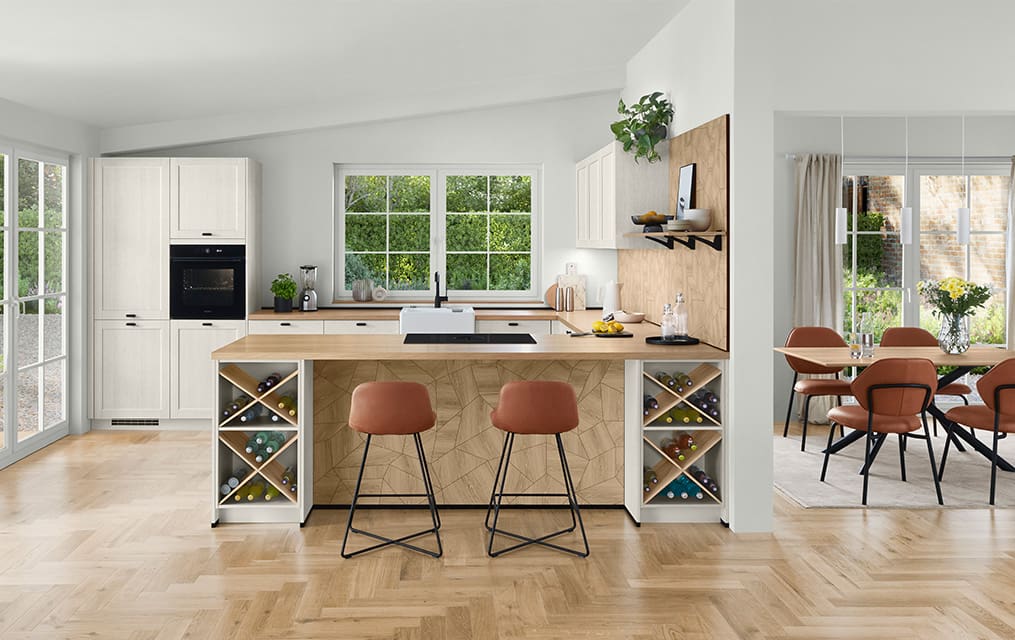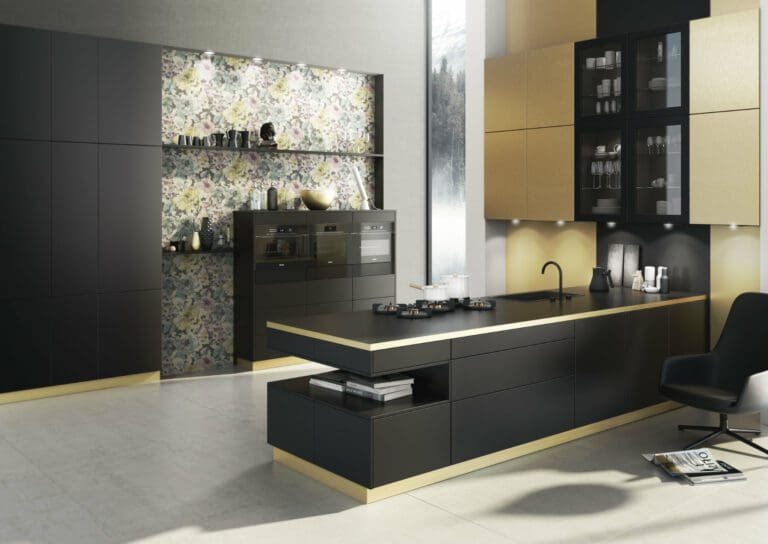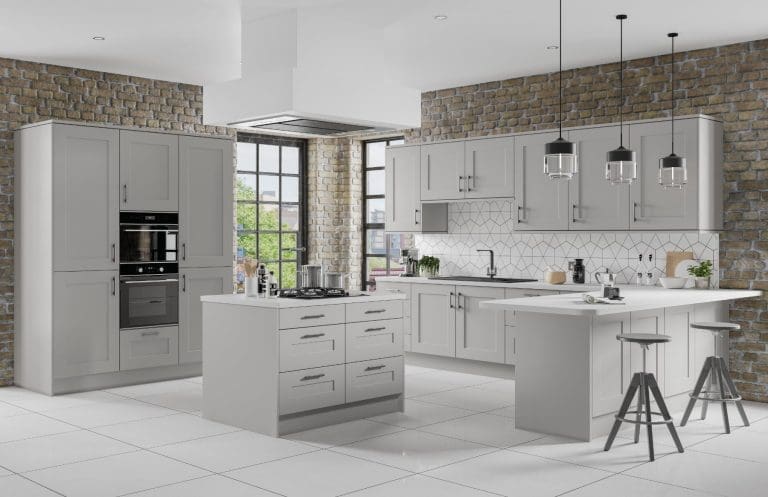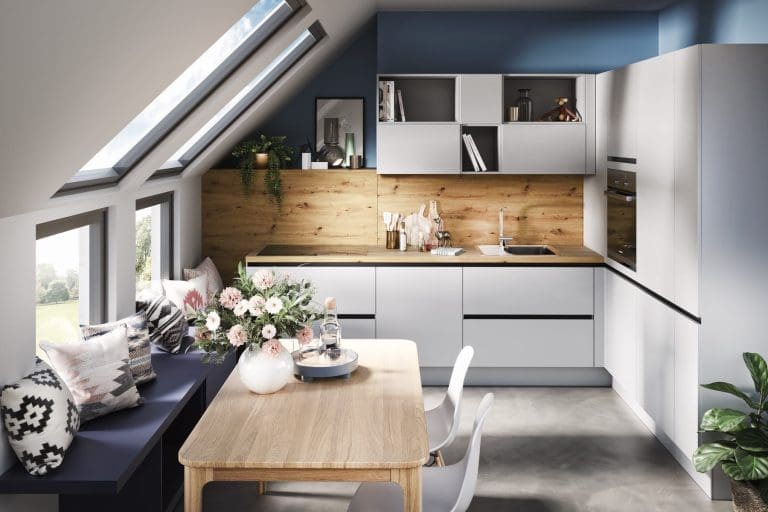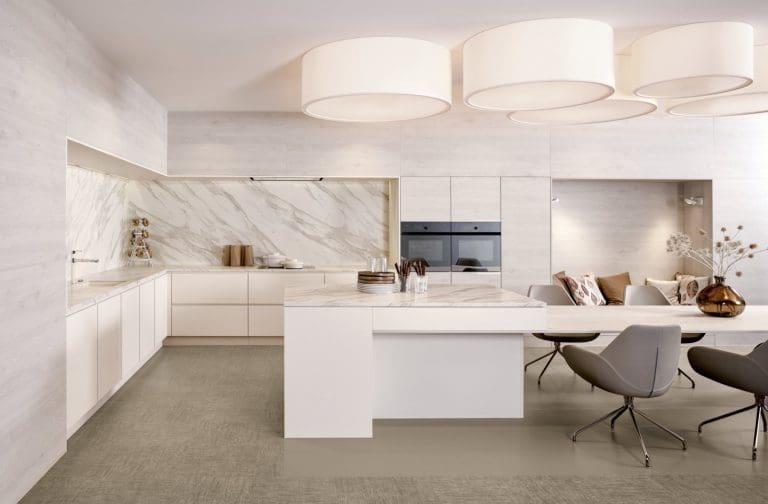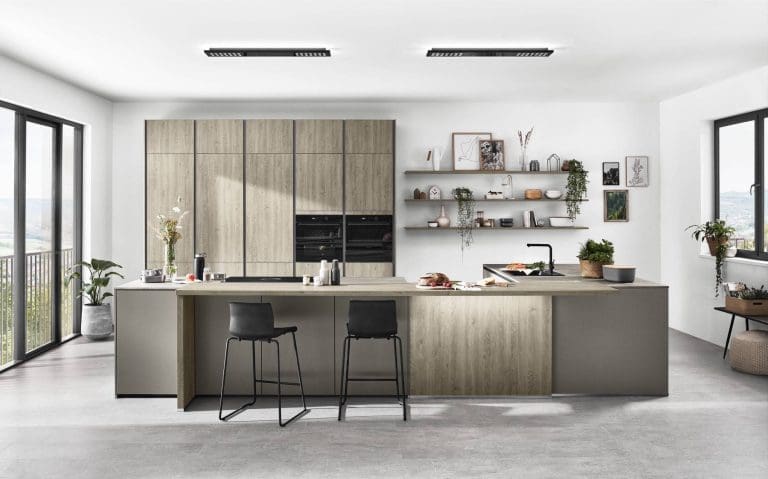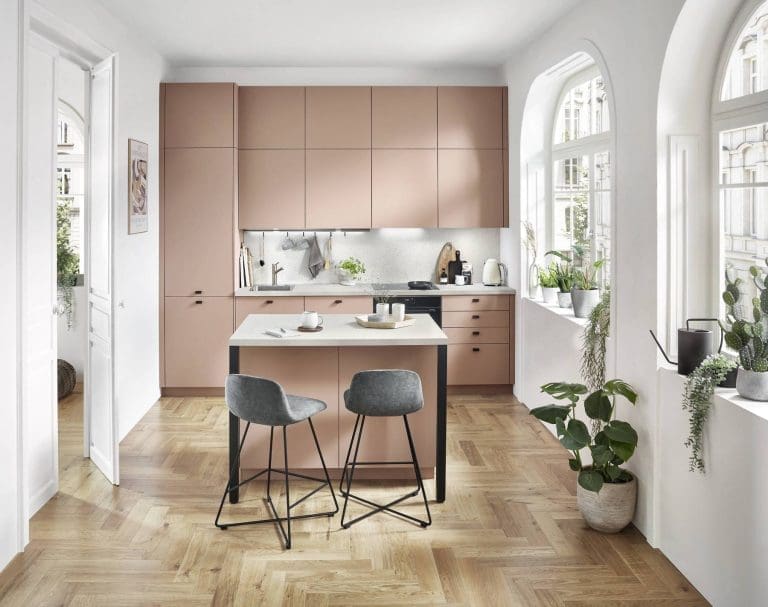Textured Kitchen Cabinet Styles to Watch Out For Next Year
The modern kitchen is continually evolving — not just in layout or function, but in the tactile qualities that make it feel lived-in, layered, and refined. In the coming year, textured kitchen cabinet styles are set to take centre stage, moving beyond flat finishes to embrace detail, warmth, and individuality. Whether it’s through fluted panels, reeded doors, or beautifully grained wood finishes, texture will play a defining role in kitchen design.
If you’re planning a new kitchen or considering a refresh, understanding the latest textured kitchen cabinet trends will help you create a scheme that feels modern yet timeless.
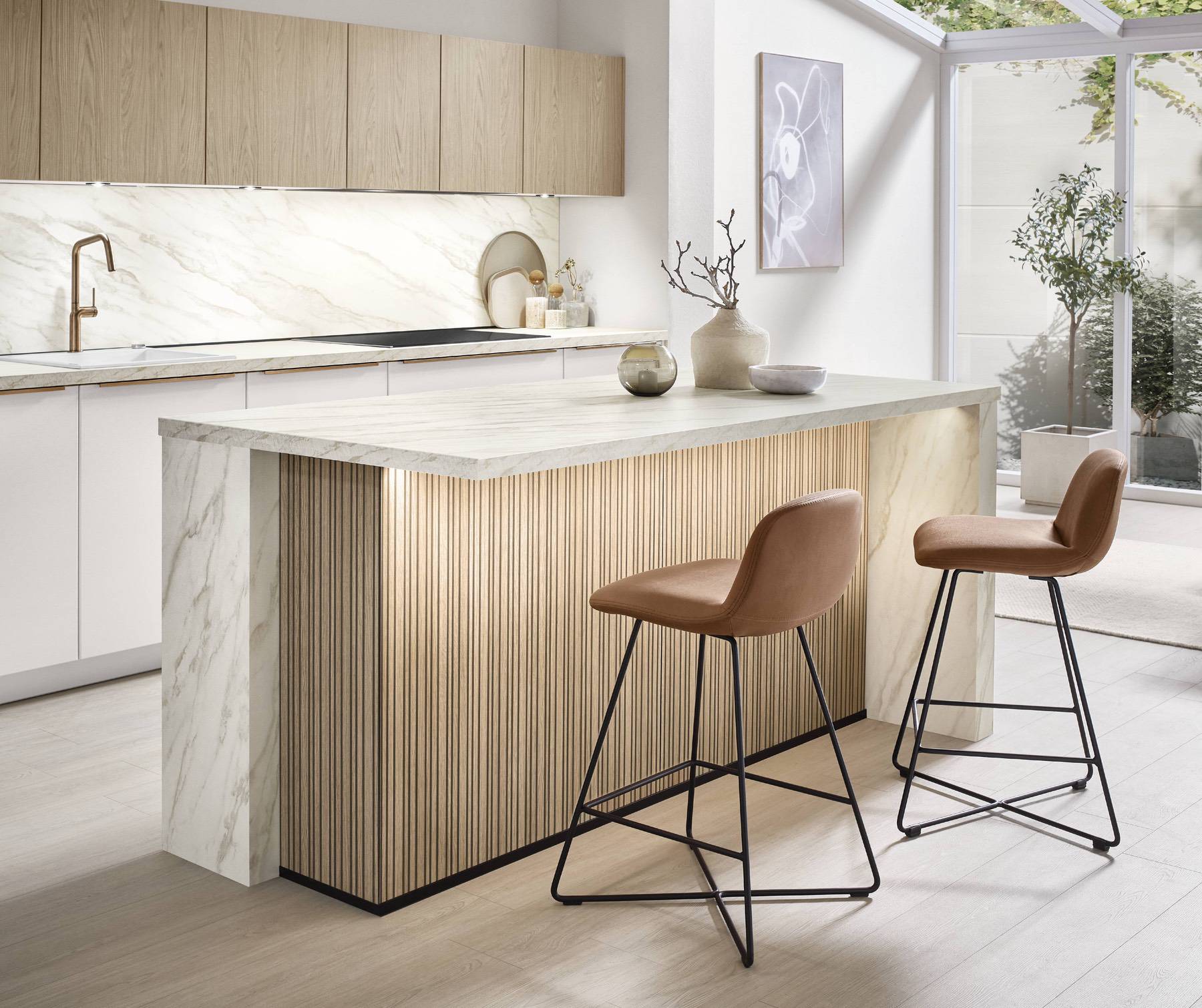
Why Texture Matters in Modern Kitchen Design
Texture adds dimension and interest in ways that colour alone cannot. In open-plan living spaces, where kitchens often flow into dining and lounge areas, textured kitchen doors break up expanses of flat surfaces and create subtle depth under changing light. The result is a scheme that feels tactile and inviting, with cabinetry that looks crafted rather than manufactured.
Beyond aesthetics, textured kitchen cabinets also offer practical benefits. Many of these finishes disguise fingerprints, minor marks, and dust — ideal for busy households or darker colour palettes. Textured kitchen surfaces can also soften the visual impact of bold shades or high-gloss materials elsewhere in the room, helping achieve a balanced and harmonious design.
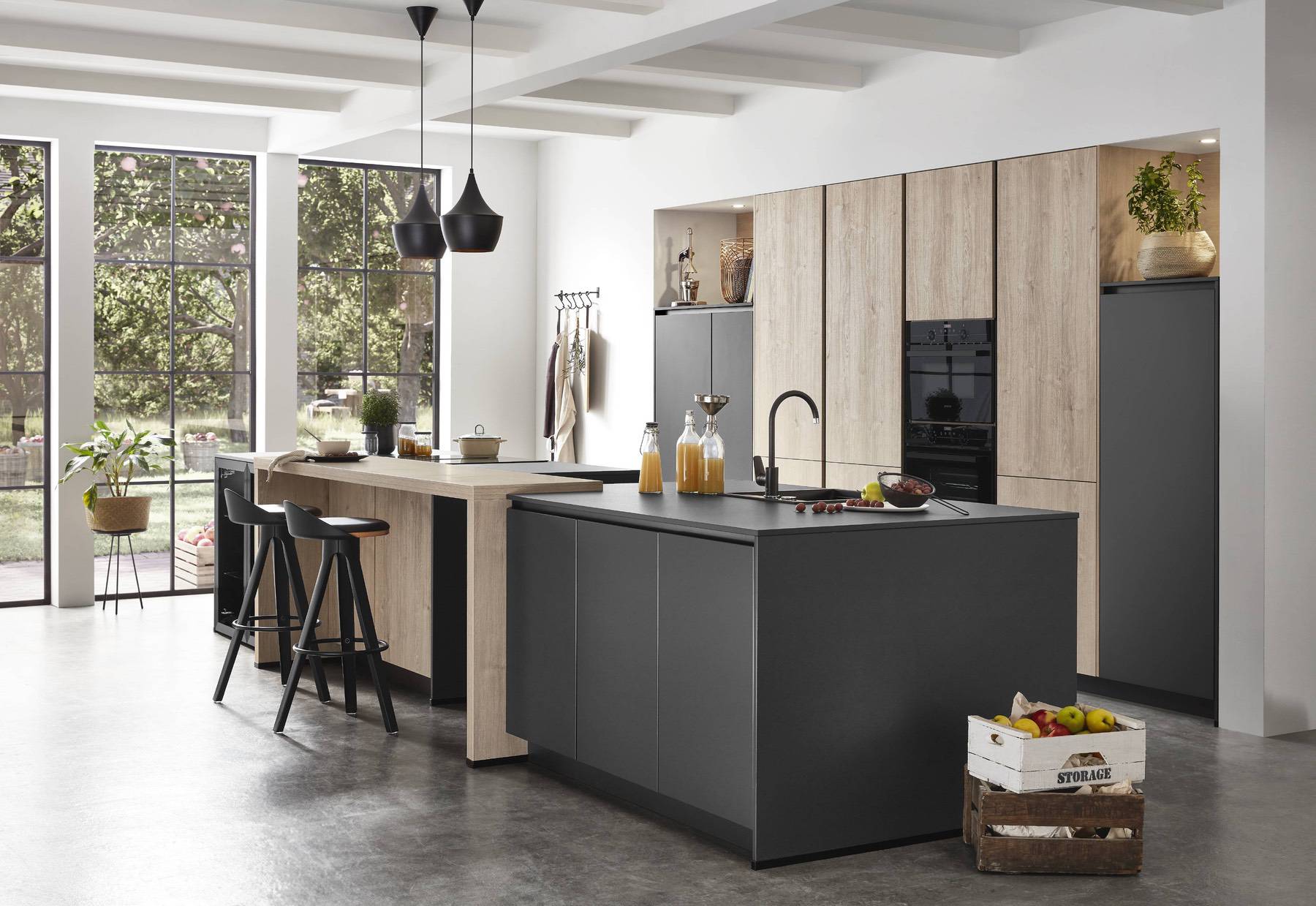
Fluted and Reeded Panels: The Standout Trend
Among the most anticipated textured cabinet styles for the coming year are fluted and reeded kitchen doors. These designs draw inspiration from Art Deco architecture and classic joinery techniques, yet feel distinctly contemporary in modern kitchens.
Fluted kitchen cabinetry features vertical grooves or ridges that create rhythm and movement. It’s an elegant detail that catches the light beautifully, changing subtly throughout the day. The look pairs effortlessly with marble worktops, brass handles, or contemporary appliances, offering a bridge between traditional craftsmanship and modern minimalism.
German kitchen manufacturers such as Ballerina and Bauformat have introduced refined versions of this style, with precisely machined vertical lines on painted or lacquered doors. Meanwhile, Nobilia and Alku offer fluted-effect finishes in textured laminates, giving you the aesthetic impact without the maintenance associated with solid timber.
For a softer look, explore reeded panels — typically shallower and more rounded than traditional fluted kitchen doors — but also on the rise. These create a subtle ripple effect that works beautifully in both coastal-inspired and urban interiors.
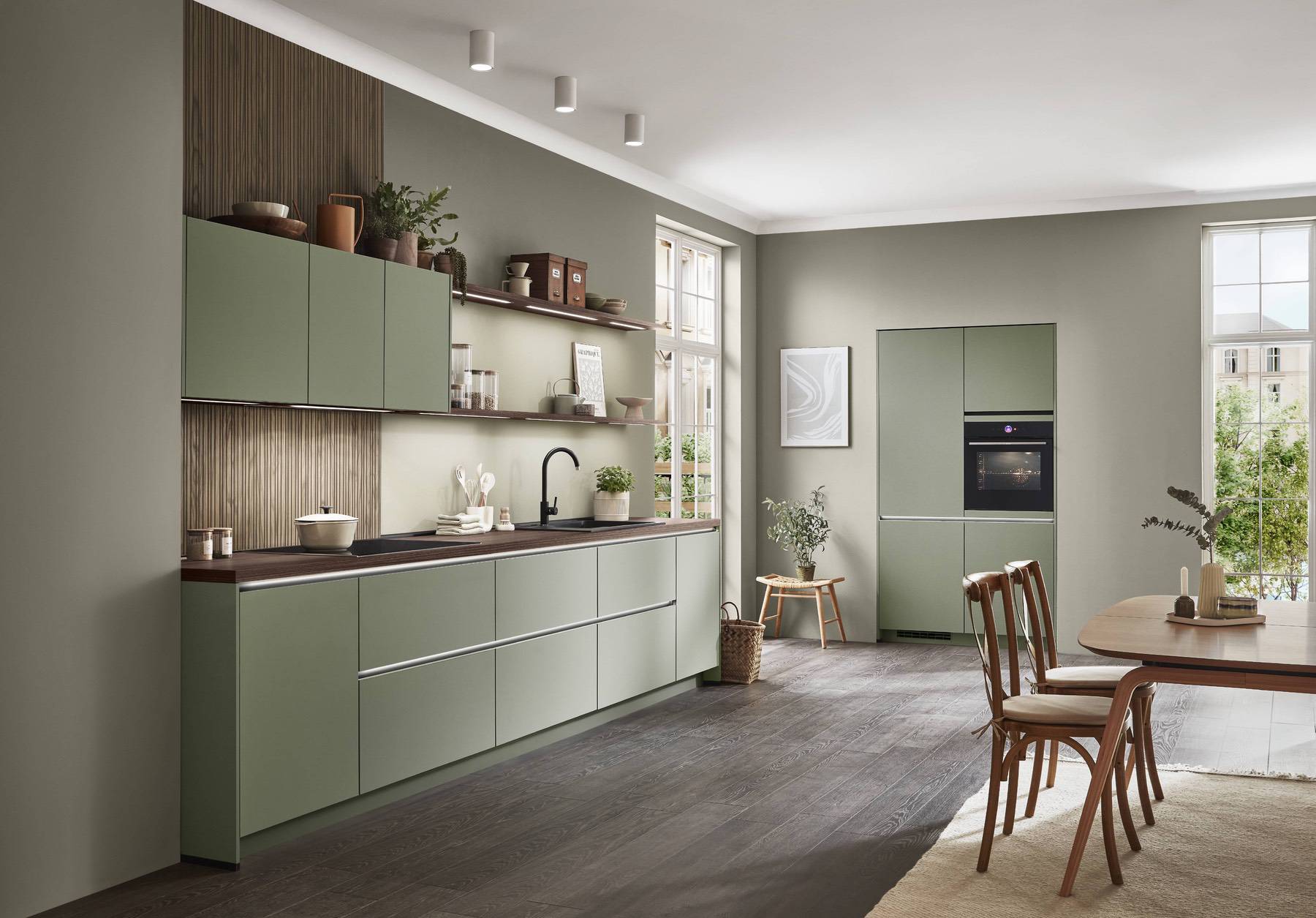
Tactile Wood Kitchen Finishes: A Natural Revival
Wood textures continue to prove popular in kitchen design, but the approach has shifted from glossy veneers to authentic, tactile surfaces that highlight the natural beauty of timber. Expect to see deep-grained oak, smoked ash, and rough-cut walnut finishes that reveal knots, grain variation, and a real sense of craftsmanship.
Brands like Brigitte and Ashley Ann showcase richly textured wood-effect laminates that mimic the look and feel of genuine timber. These doors combine durability with visual warmth, offering a convincing alternative for those who love the aesthetic of wood but want a low-maintenance option.
In contrast, Alku and Nobilia excel in real wood veneers with matt or brushed finishes, where the texture of the grain can be felt beneath the fingertips. These natural surfaces bring subtle imperfections and depth to modern kitchens, pairing perfectly with neutral worktops and soft lighting.
Tactile wood finishes also work well when used selectively. For instance, textured oak or walnut doors on a kitchen island or pantry can provide contrast against painted cabinets, giving your space a layered and designer-led feel.
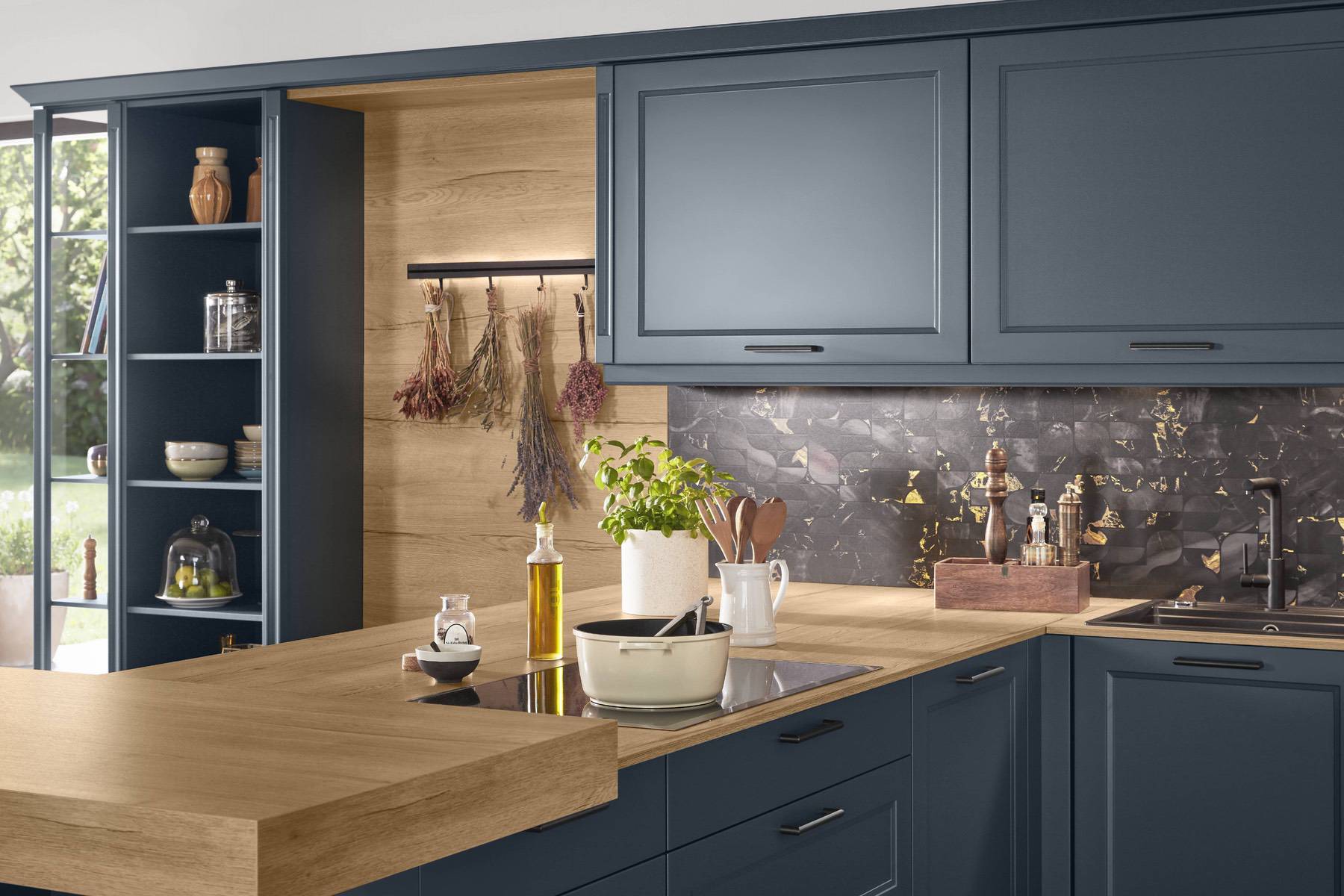
Ribbed and Slatted Detailing
Another textured kitchen cabinet style making waves is slatted cabinetry. Slim, evenly spaced slats — whether horizontal or vertical — give kitchens a handcrafted appearance, reminiscent of bespoke joinery. When paired with integrated handles or push-to-open mechanisms, this look delivers both style and simplicity.
Slatted detailing can be used to conceal appliance housings, add depth to breakfast bars, or elevate otherwise simple layouts. The pattern creates visual rhythm and shadow, making it an excellent choice for larger spaces that need structure or movement within the design.
JJO and Ashley Ann have both introduced ribbed and slatted designs in muted tones like taupe, sand, and graphite. These contemporary interpretations blend seamlessly with the minimalist kitchens that continue to dominate the UK market, particularly in open-plan settings.

Concrete, Stone and Metallic Textures
For those drawn to industrial or architectural kitchen styles, concrete and stone-effect doors are gaining renewed popularity. These finishes offer a tactile, matt surface with subtle texture that echoes natural materials without the upkeep. Grey, taupe, and off-white tones remain popular, while warmer concrete hues and oxidised bronze finishes are set to expand next year’s palette.
Nobilia and Bauformat are among the brands leading the way with innovative melamine and lacquered surfaces that replicate the cool touch and visual interest of raw materials. When combined with soft lighting and natural wood accents, these textured kitchen cabinet styles achieve a sophisticated yet grounded feel.
Metallic laminates are also emerging in muted brushed tones — think antique brass or pewter rather than mirror-finish steel. These add texture through their subtle sheen, reflecting light in gentle, diffuse patterns rather than sharp highlights.
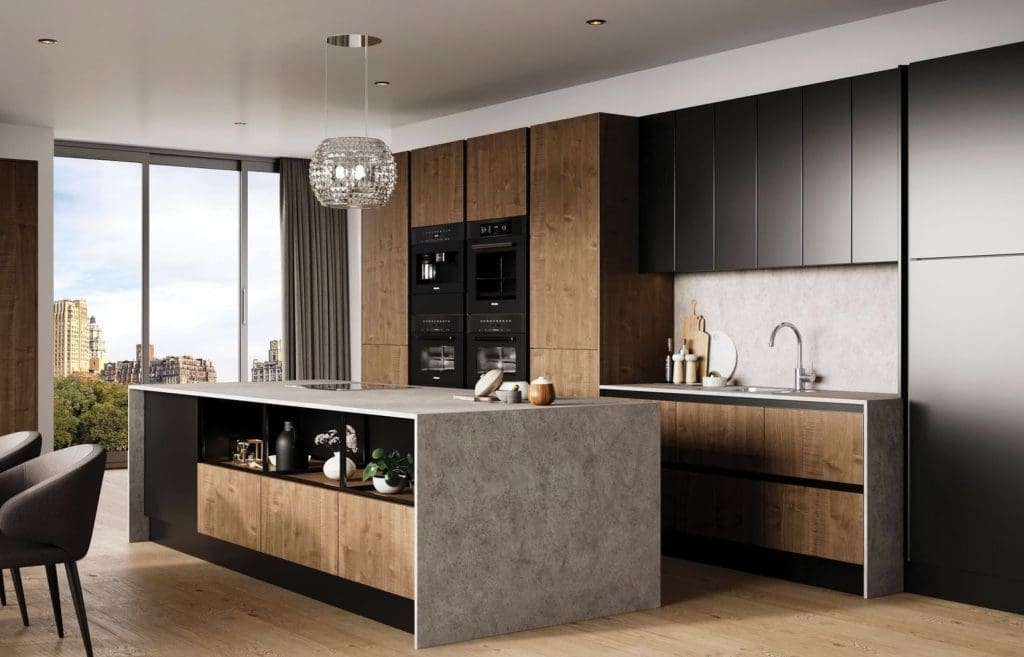
Layering Textures for a Tailored Look
The most successful modern kitchens use texture strategically, mixing smooth and tactile finishes for a balanced composition. For example:
- Combine fluted oak doors on a kitchen island with smooth matt lacquer cabinets for the perimeter.
- Contrast textured concrete-effect doors with sleek satin-finish wall units to avoid visual heaviness.
- Pair tactile woodgrain cabinets with fine-veined quartz or ceramic worktops for a warm, organic look.
By layering materials thoughtfully, you can achieve a design that feels curated and personal — not overly matched or uniform.
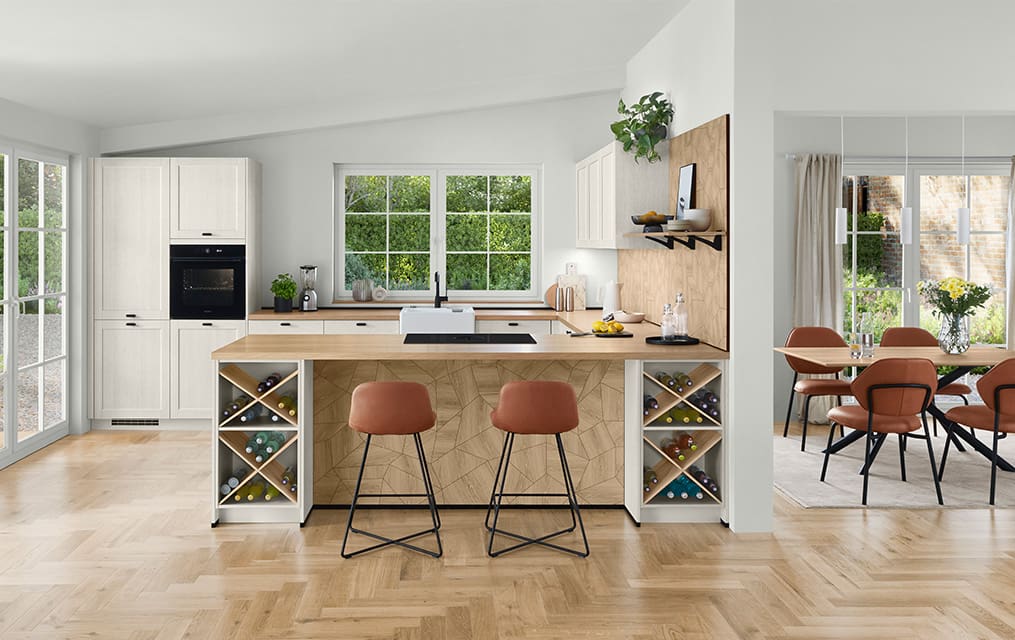
Low-Maintenance Textured Kitchen Finishes
While textured kitchen doors are undeniably beautiful, practicality remains a key consideration. Fortunately, modern surface technologies mean that many of today’s textured finishes are easy to maintain.
Anti-fingerprint coatings, durable laminates, and melamine textures mean you can enjoy depth and tactility without constant cleaning. Brands like Nobilia and Ballerina use nano-coating and embossed-in-register (EIR) techniques to replicate authentic woodgrain patterns while offering exceptional scratch and moisture resistance.
For busy households, a textured kitchen door can actually be more forgiving than a smooth gloss or lacquered finish, concealing everyday wear and tear far more effectively.
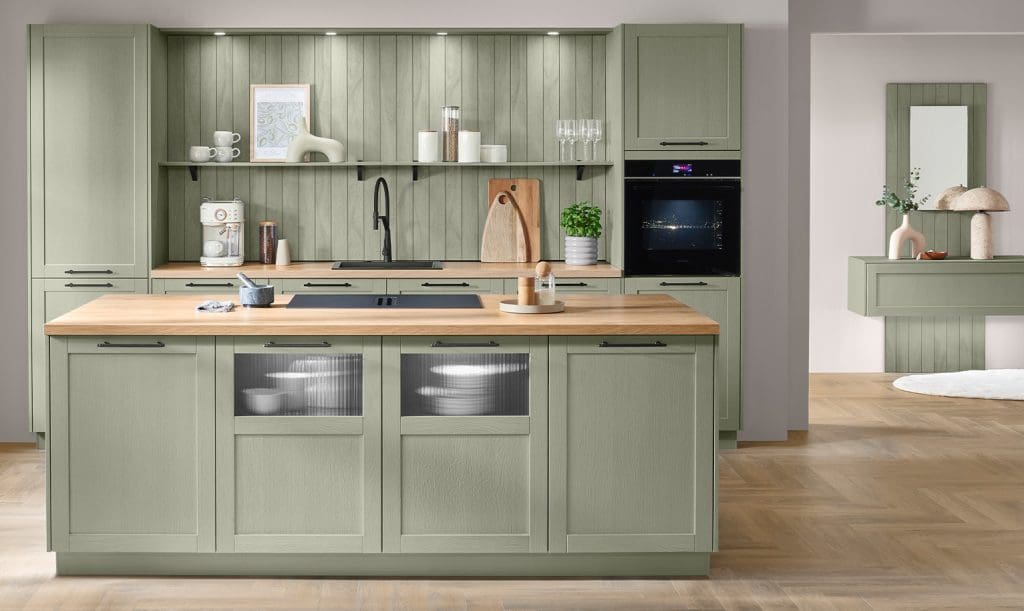
Popular Textured Worktop Options
Texture doesn’t end with your cabinetry. To complete the look, textured worktops are also seeing strong demand across UK kitchens. Materials such as Dekton, Sensa by Cosentino, and Caesarstone now come in tactile, matt, and leathered finishes that echo the raw feel of natural stone.
Brushed granite, honed quartz, and ceramic surfaces with subtle grain or micro-texture are ideal companions to fluted or woodgrain cabinetry. They provide contrast while maintaining the same understated luxury that defines this design movement.
Pairing a lightly textured worktop with smooth cabinet doors can help balance a busy design, while matching textures across vertical and horizontal planes creates a cohesive, monolithic look.
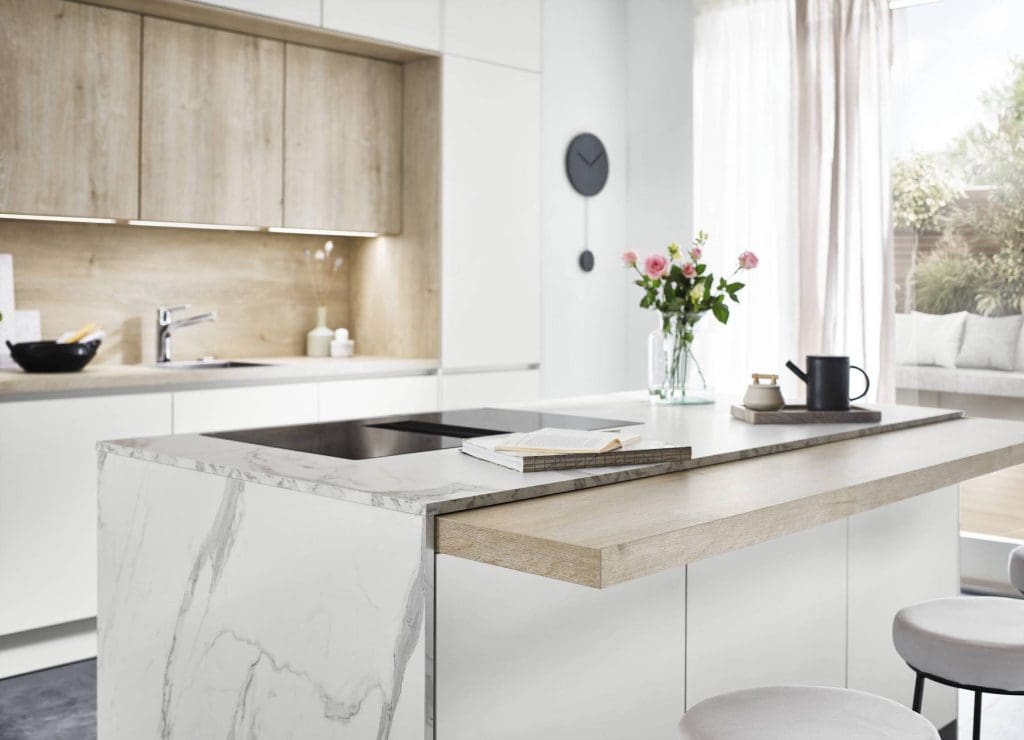
Bringing It All Together
Next year’s kitchen trends include textured kitchen cabinet styles that reflect a broader shift in kitchen design — one that celebrates craftsmanship, authenticity, and sensory appeal. From reeded and fluted doors to richly grained wood and stone-inspired surfaces, texture brings a layer of sophistication that feels both modern and timeless.
When planning your kitchen, take time to visit your local kitchen showrooms to explore different finishes in person. Touch the surfaces, feel the depth of the grain, and notice how the light interacts with each material. Working with a professional kitchen designer will help you combine textures thoughtfully, ensuring every detail — from the cabinet fronts to the worktop edge — contributes to a cohesive, tactile, and enduring design.
